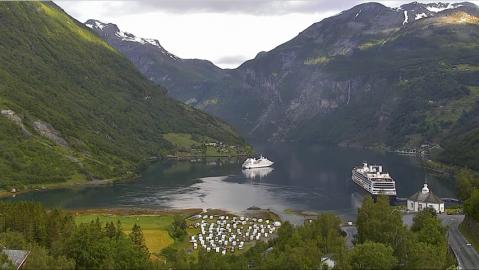#lofotenislands
Lofoten is an archipelago located in the Arctic Circle of northern Norway, renowned for its dramatic scenery, picturesque fishing villages, and outdoor adventures. The region is famous for its towering mountains, deep fjords, and pristine beaches, offering a unique blend of natural beauty and cultural heritage.
Geography and Landscape:
Mountains and Peaks: The Lofoten Islands are characterized by their rugged, sharp-peaked mountains, such as the iconic Reinebringen, offering breathtaking views.
Fjords and Bays: Deep fjords like Trollfjord carve through the landscape, surrounded by steep cliffs and serene waters.
Beaches: Stunning white sand beaches, such as Haukland Beach and Uttakleiv Beach, contrast with the rugged terrain, providing picturesque spots for relaxation and photography.
Key Villages and Towns:
Reine:
Often described as one of the most beautiful villages in the world, Reine is known for its red and white fishermen’s huts (rorbuer) against the backdrop of dramatic peaks and clear blue waters.
Henningsvær:
A charming fishing village spread across several small islands, Henningsvær is famous for its cod fisheries and the unique Henningsvær Football Stadium, perched on a rocky islet.
Svolvær:
The administrative center of Lofoten, Svolvær offers a mix of cultural attractions, restaurants, and outdoor activities, serving as a gateway to the archipelago.
Activities and Attractions:
Northern Lights: From September to April, Lofoten is an excellent location to witness the mesmerizing Aurora Borealis.
Midnight Sun: From late May to mid-July, experience the phenomenon of the Midnight Sun, where the sun never sets, bathing the landscape in golden light.
Hiking: Popular trails include the hike to Kvalvika Beach and the challenging trek up Reinebringen for panoramic views.
Fishing: Lofoten has a rich fishing heritage, and visitors can join fishing trips to catch Arctic cod or visit the Lofoten Stockfish Museum.
Kayaking and Sailing: Explore the archipelago’s scenic coastline and hidden coves by kayak or sailboat.
Wildlife Watching: Spot a variety of wildlife, including sea eagles, puffins, and whales, on guided tours.
Cultural Heritage:
Lofotr Viking Museum: Located in Borg, this museum offers an immersive experience into Viking history, with reconstructed longhouses, artifacts, and interactive exhibits.
Art Galleries and Craft Shops: Lofoten has a vibrant arts scene, with local galleries showcasing works inspired by the natural beauty of the region.
Travel Tips:
Best Time to Visit: Summer (June to August) for the Midnight Sun and mild weather; winter (December to February) for the Northern Lights and winter activities.
Getting There: The easiest way to reach Lofoten is by flying into Bodø or Harstad/Narvik Airport and then taking a ferry or driving. There are also direct flights to smaller airports like Leknes and Svolvær.
Transportation: Renting a car is recommended for exploring the islands at your own pace. There are also local buses connecting the main towns and villages.
Accommodation: Options range from traditional rorbuer (fishermen’s cabins) to modern hotels and guesthouses. Booking in advance is advisable, especially during peak seasons.
Weather: The weather can be unpredictable, so pack layers, waterproof clothing, and sturdy footwear for outdoor activities.
Lofoten’s combination of awe-inspiring natural landscapes, rich cultural heritage, and outdoor adventures makes it a dream destination for nature lovers and explorers alike.
See Iceland 4k Video : https://youtu.be/b1dpoBRtrSo
See Switzerland 4k video : https://youtu.be/W679rJYO2TQ
See Switzerland in Summer : https://youtu.be/d8Q6DQABhvI
for more videos subscribe : @TheTourdiarie
Lofoten is an archipelago located in the Arctic Circle of northern Norway, renowned for its dramatic scenery, picturesque fishing villages, and outdoor adventures. The region is famous for its towering mountains, deep fjords, and pristine beaches, offering a unique blend of natural beauty and cultural heritage.
Geography and Landscape:
Mountains and Peaks: The Lofoten Islands are characterized by their rugged, sharp-peaked mountains, such as the iconic Reinebringen, offering breathtaking views.
Fjords and Bays: Deep fjords like Trollfjord carve through the landscape, surrounded by steep cliffs and serene waters.
Beaches: Stunning white sand beaches, such as Haukland Beach and Uttakleiv Beach, contrast with the rugged terrain, providing picturesque spots for relaxation and photography.
Key Villages and Towns:
Reine:
Often described as one of the most beautiful villages in the world, Reine is known for its red and white fishermen’s huts (rorbuer) against the backdrop of dramatic peaks and clear blue waters.
Henningsvær:
A charming fishing village spread across several small islands, Henningsvær is famous for its cod fisheries and the unique Henningsvær Football Stadium, perched on a rocky islet.
Svolvær:
The administrative center of Lofoten, Svolvær offers a mix of cultural attractions, restaurants, and outdoor activities, serving as a gateway to the archipelago.
Activities and Attractions:
Northern Lights: From September to April, Lofoten is an excellent location to witness the mesmerizing Aurora Borealis.
Midnight Sun: From late May to mid-July, experience the phenomenon of the Midnight Sun, where the sun never sets, bathing the landscape in golden light.
Hiking: Popular trails include the hike to Kvalvika Beach and the challenging trek up Reinebringen for panoramic views.
Fishing: Lofoten has a rich fishing heritage, and visitors can join fishing trips to catch Arctic cod or visit the Lofoten Stockfish Museum.
Kayaking and Sailing: Explore the archipelago’s scenic coastline and hidden coves by kayak or sailboat.
Wildlife Watching: Spot a variety of wildlife, including sea eagles, puffins, and whales, on guided tours.
Cultural Heritage:
Lofotr Viking Museum: Located in Borg, this museum offers an immersive experience into Viking history, with reconstructed longhouses, artifacts, and interactive exhibits.
Art Galleries and Craft Shops: Lofoten has a vibrant arts scene, with local galleries showcasing works inspired by the natural beauty of the region.
Travel Tips:
Best Time to Visit: Summer (June to August) for the Midnight Sun and mild weather; winter (December to February) for the Northern Lights and winter activities.
Getting There: The easiest way to reach Lofoten is by flying into Bodø or Harstad/Narvik Airport and then taking a ferry or driving. There are also direct flights to smaller airports like Leknes and Svolvær.
Transportation: Renting a car is recommended for exploring the islands at your own pace. There are also local buses connecting the main towns and villages.
Accommodation: Options range from traditional rorbuer (fishermen’s cabins) to modern hotels and guesthouses. Booking in advance is advisable, especially during peak seasons.
Weather: The weather can be unpredictable, so pack layers, waterproof clothing, and sturdy footwear for outdoor activities.
Lofoten’s combination of awe-inspiring natural landscapes, rich cultural heritage, and outdoor adventures makes it a dream destination for nature lovers and explorers alike.
See Iceland 4k Video : https://youtu.be/b1dpoBRtrSo
See Switzerland 4k video : https://youtu.be/W679rJYO2TQ
See Switzerland in Summer : https://youtu.be/d8Q6DQABhvI
for more videos subscribe : @TheTourdiarie
- Category
- LOFOTEN
Commenting disabled.














